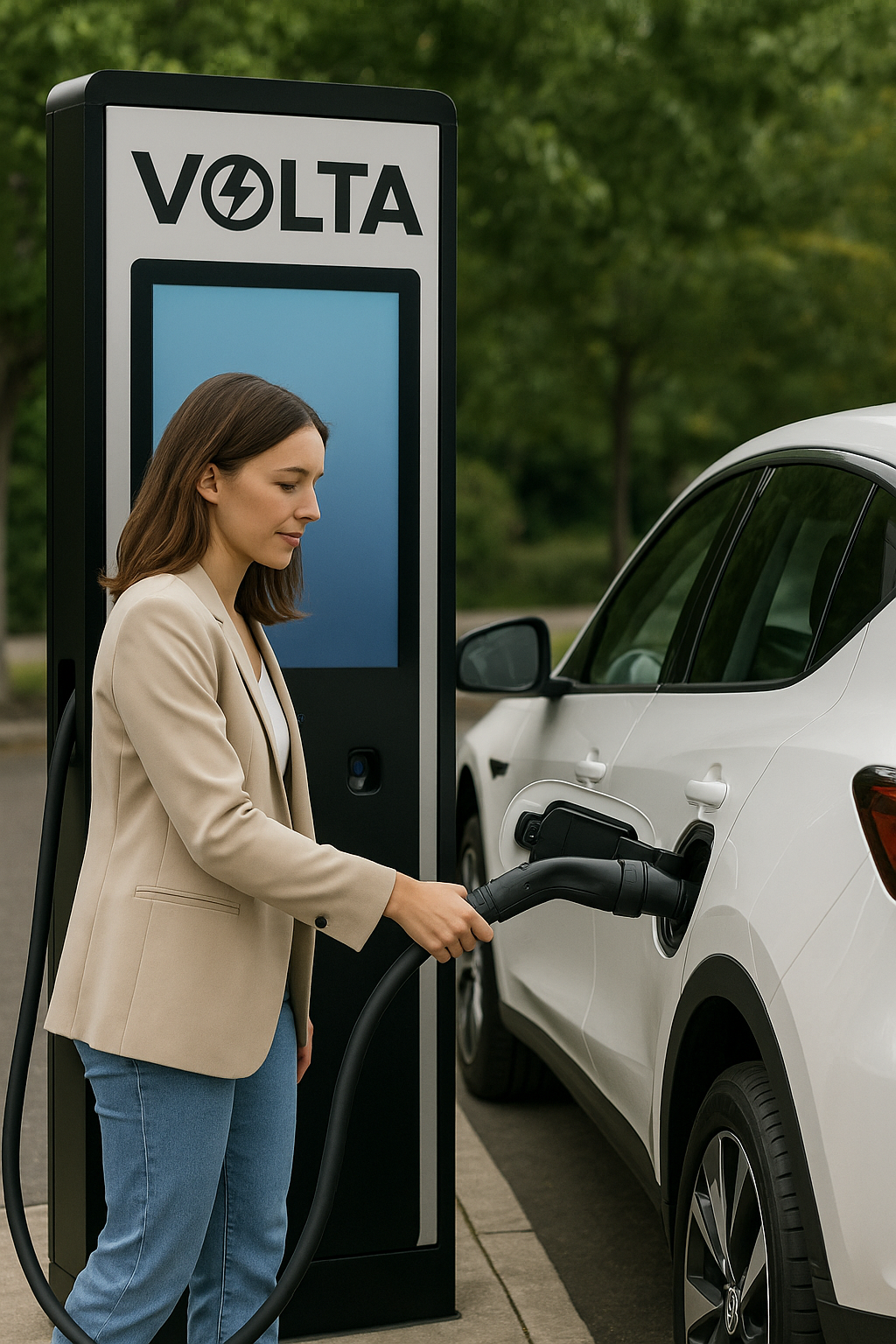Empowering EV Drivers in CEE: Overcoming Challenges with Fast Chargers
Volta Team
EV Infrastructure Experts

Central and Eastern Europe (CEE) is experiencing a gradual rise in electric vehicle (EV) adoption, but EV drivers in this region still encounter distinct challenges on the road. From limited charging infrastructure to concerns about range, these hurdles can make EV ownership less convenient than in Western Europe.
What hurdles do EV drivers face in Central and Eastern Europe?
EV drivers in CEE share many of the same concerns as EV owners elsewhere, but certain issues are especially acute in countries like Czechia, Slovakia, and Poland. Key hurdles include:
Limited charging infrastructure: The network of public chargers in CEE lags behind Western Europe, leading to range anxiety. Poland, for example, had around 6,691 public charging points by early 2024 – far fewer than smaller Western European countries – making long-distance or inter-city travel daunting for some drivers.
High vehicle costs and lower incentives: The initial purchase price of EVs remains high relative to average incomes in CEE. Historically, government incentives have been modest, though this is beginning to change with new subsidy programs (Poland recently announced €380 million in EV purchase subsidies).
Range anxiety and misinformation: Range anxiety – the fear that an EV's battery will deplete before reaching a charger – is common. This is exacerbated by misinformation about EV performance. Surveys in Poland highlight persistent obstacles such as high upfront costs, inadequate charging networks, and scepticism about battery range.
Uneven adoption rates: CEE countries have been slower in the EV transition. Recent analyses rank Czechia, Slovakia, and Romania among the slowest EV adopters in Europe. In 2024, fully electric cars made up only about 2.4% of new car sales in Slovakia, placing it last among European countries for EV market share.
How many electric vehicles are on the road in Czechia, Slovakia, and Poland?
EV presence in CEE is growing steadily, even if it's behind Western Europe's levels. Understanding the current EV numbers in these key countries provides context:
Czech Republic (Czechia): By the end of 2024, Czechia had over 36,000 battery-electric cars on the road. This was a jump of ~14,000 in one year, reflecting record growth. Yet, it still equals only 0.5% of all passenger vehicles nationally. Prague leads with the highest concentration of EVs (over 12,000 in the capital region).
Slovakia: Slovakia crossed 15,476 battery-electric vehicles at the end of 2024, a 53% increase from the previous year. The total EV count is smaller than Czechia's, reflecting Slovakia's smaller population and later start in electrification. However, growth is accelerating – experts expect over 20,000 EVs in Slovakia by the end of 2025.
Poland: Poland, the region's largest country, has the most EVs in absolute terms. As of mid-2024, about 69,000 battery-electric vehicles were registered in Poland (around 119,000 when including plug-in hybrids). This is notable growth (up ~7% from mid-2023) but still far below ambitious targets.
Why is charging infrastructure crucial for CEE's EV adoption?
A robust charging infrastructure is the backbone of widespread EV adoption. Drivers need confidence that they can conveniently recharge during daily routines or road trips. Currently, one of the biggest pain points for CEE EV drivers is the lack of dense charging networks, especially fast chargers.
Building more chargers directly tackles range anxiety. A Polish industry report emphasized that an extensive charging network not only offers convenience but also alleviates drivers' fear of limited range. When chargers are readily available – at highway stops, shopping centers, and city parking lots – drivers feel more secure that they won't be stranded with a low battery.
How can Volta's fast chargers at retail locations help CEE EV drivers?
Volta is introducing a strategic solution to CEE's charging woes: deploying fast charging stations at retail hubs and large parking areas in major urban agglomerations. This model directly addresses several of the challenges EV drivers face:
Convenient locations for daily routines: By installing chargers at retail parks, shopping centers, and supermarkets, Volta places charging opportunities where drivers already go. An EV owner can charge while they shop or run errands, effectively combining refueling time with useful activity.
Fast charging technology: Volta focuses on DC fast chargers that can deliver a significant charge in a short period. Fast chargers can add dozens of kilometers of range in 10–30 minutes, unlike standard slow outlets that might take hours. This significantly reduces waiting times for drivers.
Reducing range anxiety in cities: Large metropolitan areas in CEE are "agglomeration" zones where EV adoption is highest, but they also suffer from traffic and sometimes a lack of private parking/garages. By peppering these high-traffic areas with reliable chargers, Volta assures drivers that no part of the city is off-limits.
What does the future hold for EV drivers in the CEE region?
The outlook for EV drivers across Czechia, Slovakia, Poland and neighboring countries is increasingly positive. Several trends point to an improving experience in the coming years:
- Accelerating infrastructure build-out with companies like Volta investing in new charging stations
- Government support and incentives catching up to Western European levels
- More affordable and diverse EV models entering the market
- Volta's expanding impact through retail-hub fast chargers
While EV drivers in Central and Eastern Europe have faced notable hurdles, solutions are on the horizon. The combination of policy support, market development, and private infrastructure investment like Volta's retail-hub fast chargers is set to transform the EV experience in CEE.
